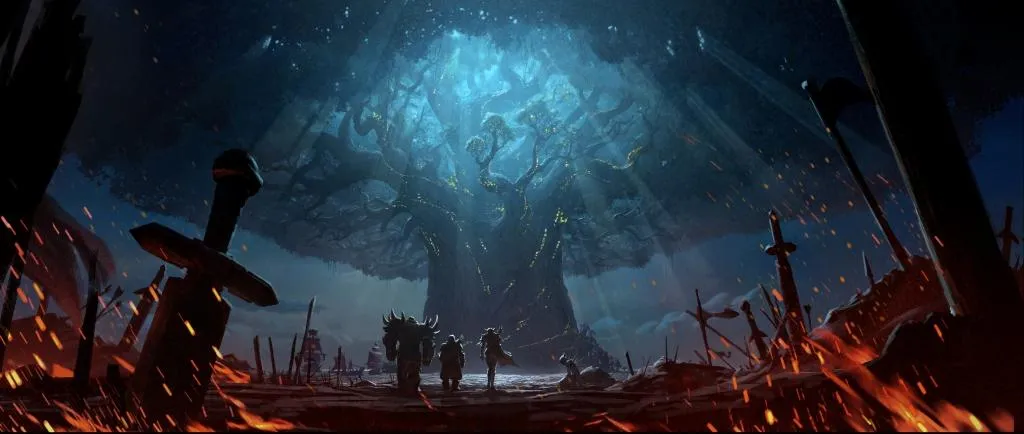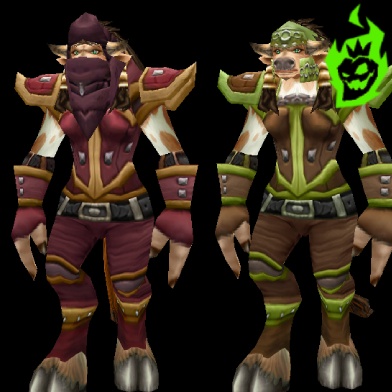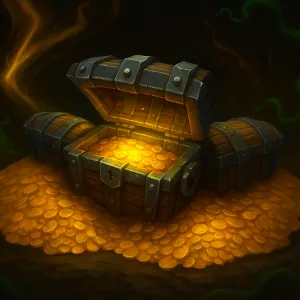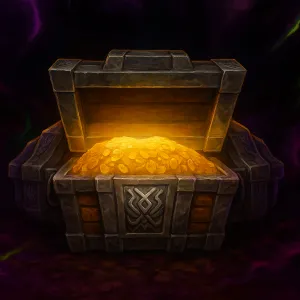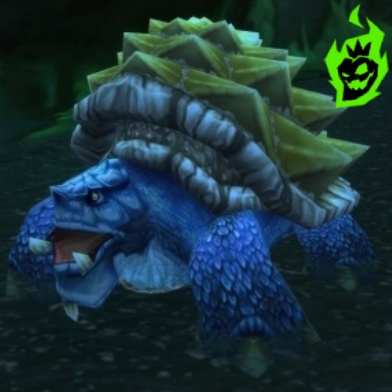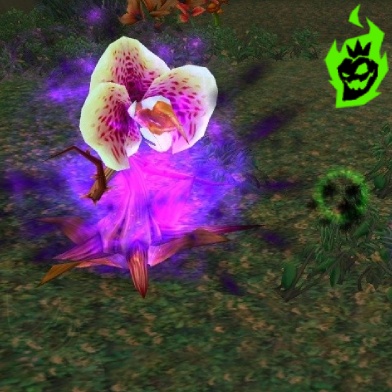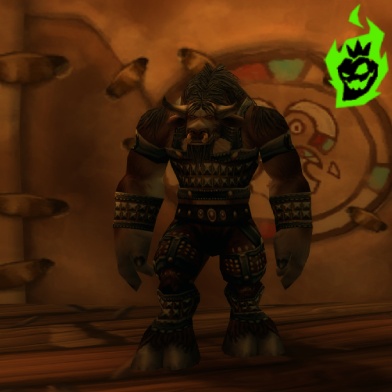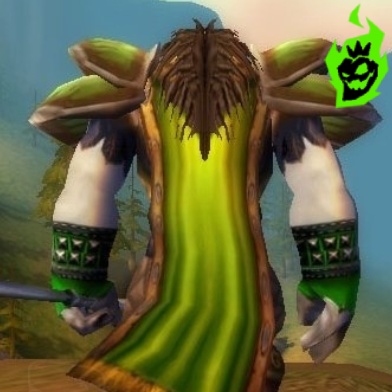WoW Classic Tribal Leatherworking Guide
I personally love Tribal Leatherworking in WoW Classic because it combines so many different recipes, tough questlines and gear made from the most iconic items in the entire game. This profession is mainly associated with Druids (especially Feral and Resto) but it has some nice benefits for other classes too. During my own playthrough I found that becoming a tribal leatherworker requires patience and resource gathering. There is also a sense of accomplishment when you complete the quests for this path knowing every piece you craft has a bit of that tribal flavor. Below I’ll share my tips and methods that made Tribal Leatherworking fun and rewarding.
Why Tribal Leatherworking in WoW Classic
I always liked Tribal Leatherworking because it focuses on gear pieces with stats that fit multiple playstyles. Many players associate it with Resto Druid gear but I found some pieces are perfect for Feral Druids who switch in and out of forms. There is also a natural synergy for hybrids who want to play damage, healing and utility.
Another reason I like it is the Wolf’s Head Helm which grants bonus energy and rage on shapeshift. Personally I like items that reward complex rotations and shape-shift timings. Finally Tribal Leatherworking gives exclusive access to high demand gear like the Devilsaur Set which is highly sought after by those trying to push their melee damage to the max.
Choosing Tribal Leatherworking in WoW Classic goes beyond personal preference. It gives you gear that contributes heavily to group play, solo grinding and even PvP. I like the versatility and the knowledge that every piece of crafted gear can either be for my own characters or sold for a nice price at the Auction House. In the end Tribal Leatherworking is a multi-faceted path and that’s why I find it appealing for those who want to craft unique items and experiment with more gear combinations.
Completing the Wild Leather Set Quests
The Wild Leather Set quest chain is the foundation of what it means to be a tribal leatherworker. You have to do these quests to unlock the Tribal Leatherworking specialization. It starts with traveling to Feralas (for both Horde and Alliance) and talking to the local Leatherworking Suppliers. Before you can step into the tribal path you have to prove yourself and gather several recipes for the Wild Leather pieces.
These quests revolve around crafting items and turning them in for the Wild Leather recipes. On top of that there is a final quest that gives the last piece of the set, the Wild Leather Cloak. I always liked how these quests make players gather their own materials, resulting in hours of farming and skinning that also boosts Leatherworking skill and resource stock.
The sense of progression is clear. Completing this quest chain gives you the recipes for the Wild Leather items and opens up the advanced part of Tribal Leatherworking. Once you have completed these quests you can talk to the respective Tribal Leatherworking Trainer in Stranglethorn Vale (Horde) or between Feralas and Thousand Needles (Alliance).
Wild Leather Set Overview
It helps to have an overview of the Wild Leather Set recipes and their corresponding quest requirements. Below is a simple reference for each quest item you craft:
| Wild Leather Quest | Quest Turn-In Item | Key Materials | Rewarded Recipe |
|---|---|---|---|
| Wild Leather Armor (Intro) | 10x Thick Leather | 10x Thick Leather | Access to 5 Wild Leather Quests |
| Wild Leather Helmet Quest | 1x Turtle Scale Helm, etc. | Varies per quest stage | Wild Leather Helmet |
| Wild Leather Shoulders | 1x Nightscape Shoulders | 6x Thick Leather, 1x Wild Vine | Wild Leather Shoulders |
| Wild Leather Vest | 1x Nightscape Vest | 8x Thick Leather, 1x Wild Vine | Wild Leather Vest |
| Wild Leather Leggings | 1x Turtle Scale Pants | 8x Thick Leather, 1x Wild Vine | Wild Leather Leggings |
| Wild Leather Cloak (Final) | 1x Nightscape Cloak | 5x Thick Leather, 1x Wild Vine | Wild Leather Cloak |
The intro to these quests is straightforward but the real challenge is gathering enough Turtle Scales, Thick Leather and Wild Vines. An element I liked was how each step unlocks another piece of the puzzle. By the end the Wild Leather recipes give decent leveling gear and it flows nicely into the official Tribal Leatherworking quest.
Essential Materials for Wild Leather Quests
Wild Vines, Turtle Scales and a lot of Thick Leather are required for the Wild Leather quest chain. My first time doing these I underestimated how many hours it would take to stockpile all the materials. Not preparing enough resources sets you back and you will have to go back to the zones.
Each piece of the Wild Leather set requires at least one Wild Vine and multiple crafted items that use Thick Leather and either Turtle Scale or Nightscape recipes. I found that combining the gathering process with regular leveling or daily farming helps to maintain a steady flow of materials. This way you don’t have to scrounge at the last minute and it makes the progression through the quests more relaxed.
At the end of these you will have every piece of the Wild Leather set. Even if the set is overshadowed by some dungeon drops it’s a vital stepping stone for the future Tribal Leatherworking recipes. I also saved extra materials to resell or to help friends who were doing the same chain.
Materials Needed for the Entire Wild Leather Questline
Below is a list of the required items. Gathering them in advance makes the progression through the quest series smooth.
- 182 Thick Leather
- 112 Turtle Scales
- 7 Wild Vines
- Various green-quality Leatherworking items (Nightscape and Turtle Scale gear)
Thick Leather is obtained from mid-level beasts (40s range), making zones such as Tanaris and Feralas good spots to farm.
Turtle Scales drop from turtles primarily located in Tanaris (Steeljaw Snappers and Surf Gliders).
Wild Vines drop from trolls in Hinterlands, Stranglethorn Vale, or from elite trolls in Jintha’Alor.
Having all of these before turning in each quest saves time and reduces the need to go back and forth. The feeling of relief when I had them all in my bags was worth the grind.
Farming Turtle Scales and Thick Leather in Tanaris
Some of my favorite memories are of Tanaris, a zone with wide open desert landscapes and enough turtles to keep a skinner busy for hours. The Steeljaw Snappers on the eastern coast and the Surf Gliders in the southern coast are prime targets for both Turtle Scales and Thick Leather. Droprates are higher than most places and competition for spawns can be intense but manageable if you plan your hunts.
I’ve met other players with similar goals along the shoreline, sometimes leading to unexpected cooperation and faster farming. When I was after those final Turtle Scales I found that exploring the edges of the coastline would often yield extra kills that others had skipped. The combination of leveling, earning gold and farming Leatherworking materials has always been a big draw for this zone.
After finishing my turtle-hunting expeditions I would walk away with a big stack of Thick Leather and enough Turtle Scales to craft the needed recipes. The feeling of XP, gold and gear progression was like a bonus that made collecting these materials even more fun.
Tanaris Turtle Farming Reference
Below is a table with approximate droprate and level data for each turtle mob. Helps to pick the right spot in Tanaris based on your level range or group preferences.
| Mob | Level Range | Approx. Droprate | Skinning Result |
|---|---|---|---|
| Steeljaw Snapper | 47-49 | 35% Turtle Scales | Thick Leather 50% |
| Surf Glider | 49-50 | 28% Turtle Scales | Thick Leather 45% |
Dropping rates are my own experience and information from the community. Results may vary based on luck but I always had enough materials after a few hours. My personal method is to focus on Steeljaw Snappers first then switch to Surf Gliders if others are competing for kills.
Once you have finished your turtle hunting, it’s a good idea to hold on to any extra Turtle Scales you find. A future Leatherworking recipe or a guildmate might want them and they might even sell for some gold on the Auction House.
Strategies for Collecting Wild Vines
Wild Vines have a notoriously low droprate of 5-7%. They are mainly dropped by trolls in Hinterlands and Stranglethorn Vale though elite trolls in Jintha’Alor can also drop them. I prefer the non-elite troll camps in Hinterlands because they have a decent amount of mobs without too much competition from other players.
But the trolls in central Stranglethorn Vale are another option. Theirs are level 40s so they die fast for well geared characters. The downside is that the area has more traffic so waiting for respawns can slow you down. For those with a partner or a level advantage, Jintha’Alor elites might be faster if the group can handle them safely.
Wild Vines have always felt like a roadblock but there is some satisfaction in finally seeing them drop. When I farm this ingredient I watch the general chat for others doing the same. Trading drop locations, grouping together or selling extra vines on the Auction House can lead to friendships and profit.
Wild Vine Troll Farming Zones
- Western Hinterlands – Non-elite trolls around level 45-47.
- Jintha’Alor – Elite trolls ranging from level 47-50.
- Central Stranglethorn Vale – Non-elite trolls around level 40-43.
It helps to bring along potions or food to handle the multi-pulls that sometimes occur in troll camps. These places also contain other drops (like Runecloth at higher levels), so the trip might yield more than just the Wild Vines you seek. Eventually, I found a rhythm in the Hinterlands that ensured a consistent drop or two per hour, making the grind feel less repetitive
Becoming a Tribal Leatherworker
Once you have completed the entire Wild Leather quest chain and learned all the recipes, talk to the Tribal Leatherworking Trainer. For Horde this is in a hut south of the Mizjah Ruins in Stranglethorn Vale and for Alliance on the southern border between Feralas and Thousand Needles.
To prove yourself, you will craft the Wild Leather Helmet and Vest again which uses more Wild Vines. I winced when I realized I needed more vines after all the effort to get the initial batch. But it’s worth the final push to unlock the signature recipes that defines Tribal Leatherworking.
Once the quest is complete the trainer gives you the new recipes for Wolf’s Head Helm and Feathered Breastplate. Those two items alone made the entire quest chain worth it, especially for a Druid who values shape-shifting synergy. My advice is to gather extra Wild Vines from the start just to avoid frustration at the end.
| Quest Requirement | Location | Notable Materials | Rewards |
|---|---|---|---|
| Wild Leather Helmet + Vest | 3x Wild Vines (total) | More Thick Leather | Unlock Wolf’s Head Helm, Feathered Breastplate |
| Quest Giver (Horde) | Small hut, south of Mizjah Ruins (STV) | – | Access to Tribal Leatherworking |
| Quest Giver (Alliance) | Southern border between Feralas and Thousand Needles | – | Access to Tribal Leatherworking |
These last two steps will open up the entire Tribal Leatherworking craft list. Once you meet all the requirements the full Tribal Leatherworking craft list will be accessible, including leveling gear, raid resist pieces and top tier items.
Iconic Tribal Leatherworking Craftables
I have always loved the uniqueness of Tribal Leatherworking items, especially the ones that bring out hidden strengths in leather wearing classes. Besides the well known Wolf’s Head Helm and Devilsaur Set, players also get access to sets like Ironfeather, Frostsaber and Warbear. Each set has something special, whether it’s additional spell damage, resistances or heavy stamina.
Below I’ll go over each recipe group. I personally liked the sets that complement Druids but some items also cater to Rogues, Shamans or cloth-wearers who need certain resistance stats. Some of these craftables can be sold for high prices especially when certain raids or world events increase demand.
No matter what you plan to do with your new recipes each group offers interesting paths for PvE and PvP. Players who like to collect and trade rare patterns take pride in completing the final items since a few recipes drop from rare or hard to find mobs. Getting them makes your Leatherworker into a specialized crafter who can supply guildmates or customers with gear that stands out from standard dungeon drops.
Wolf’s Head Helm and Feathered Breastplate
I consider the Wolf’s Head Helm to be the best for Feral Druids as it gives extra energy and rage upon shapeshifting. This is priceless for those who like to weave cat and bear forms into one fight. The Feathered Breastplate has plenty of spirit and encourages a more hybrid playstyle. I like using these two items while leveling, healing and then shifting back into cat form to finish the fight.
Wolf’s Head Helm requires mid-range materials so it’s relatively easy to craft once you get the recipe. I wore it well into higher levels especially for PvP duels. Combining it with the Feathered Breastplate makes you cast rejuvenation, shift, and then cast again after the spirit based mana regen has time to work.
These items are what Tribal Leatherworking is all about: crafting gear that does more than just give basic stats. Instead they encourage players to play in new and creative ways that revolve around healing, damage and utility.
Frostsaber Set
The Frostsaber items (chest, legs, gloves, boots) seem weird because of the focus on Shadow and Frost Resist without any core attributes like stamina. I rarely see these used as main gear but they might be used for niche purposes in high level content. For example some raid encounters in Naxxramas or AQ40 require resistance checks.
However the Frostsaber Set recipes drop at low percentages from Winterfall Furbolg in Winter Spring. I have heard of players who spent weeks farming the Frostsaber Tunic recipe since it’s supposed to drop at 2% from Winterfall Ursa. Others skip the set all together unless they are set collectors who want to get every pattern. I respect the dedication of those who farm these recipes to have every craft possible.
Ironfeather Set
The Ironfeather items mainly focus on spell damage and healing and have a two-piece set bonus that adds +20 to spell damage and healing. I like it because it’s good for hybrid casters who play multiple roles. When I was leveling my hybrid Druid I often dreamt of wearing the Ironfeather Set to max out my quick healing and then shift into cat or bear form.
To complete the set you need to get both Ironfeather Shoulders and Ironfeather Breastplate. The Shoulders pattern is sold by a vendor in Hinterlands while the Breastplate pattern drops at 5% from Vilebranch Hideskinners in Jintha’Alor. If you go there to farm Wild Vines you might as well pick up the pattern too. That efficiency made me smile when I realized I could do two farms in one location.
Devilsaur Set
The Devilsaur gear (gloves and leggings) is the signature item of Tribal Leatherworking for melee characters who want high Attack Power plus extra Critical Strike and Hit. I think it requires 22 Devilsaur Leather to craft both pieces. Many guilds used to lock down Un’Goro Crater devilsaur spawns to control the market. The Gloves pattern is sometimes sold by the goblin vendor Nergal in the northern camp while the Leggings pattern has a 1% chance to drop from various oozes in the crater.
From a gold-making perspective the Devilsaur Set is very profitable. Melee classes will pay top gold for the gear. For my Druid I always found the raw stats of the set tempting but I favor items that provide utility in shapeshifting. Regardless it’s a highly sought after set throughout most of WoW Classic.
Warbear Set
The Warbear chest and leggings have Strength and Stamina. I like them because the leggings look kinda skimpy for something named “Warbear”. Both recipes are World Drops or from the Timbermaw Hold vendor if your reputation is high enough. The vendor route requires your character to not attack Timbermaw Furbolgs and earn enough favor to buy the patterns.
In my early days I experimented to bring an alt to Timbermaw Hold to stay friendly. This way I could farm Furbolgs on my main farm without worrying about a negative reputation. This was just for the fun of passing through their tunnel while others fought them. The Warbear gear is situational but it’s fun to craft for those who want unique appearances or unusual gear sets with high stamina.
Epic Tribal Leatherworking Recipes
The epic items tied to Tribal Leatherworking are highly wanted for their stats and as a steady source of income. Three items stand out: Hide of the Wild (healing cloak), Corehound Belt (fire resistance belt) and Molten Belt-style boots (also known as Corehound Boots, a best-in-slot fire resistance piece). These are great for endgame raids like Molten Core and Blackwing Lair where fire resistance matters.
Hide of the Wild is a best-in-slot healing cloak until deep endgame content like AQ40 or Naxxramas. I’ve seen players camp to have it crafted, especially those who kept the item for a long time. The belt and boots are from the Thorium Brotherhood vendor in Blackrock Depths requiring Friendly reputation for the boots and Revered for the belt. The cloak pattern is found in Dire Maul North dropping from Knot Thimblejack’s cache at about 2%.
I look at these items as a prime example of the dedication required to master Tribal Leatherworking. Farming dire maul, building Thorium Brotherhood reputation and gathering enough materials for each item is a challenge. But once everything is gathered the payoff in performance or gold can be huge.
Final Thoughts on WoW Classic Tribal Leatherworking
Tribal Leatherworking has been a deep and multi-step specialization that has changed my perspective on WoW Classic professions. The questlines, recipes and material requirements teach you how to combine skinning, resource management and knowledge of multiple zones. Whether I was traveling the desert coasts of Tanaris or the troll-infested highlands of the Hinterlands, every zone felt connected to my goal of getting special gear.
The Wild Leather chain sets the stage and the final challenge for the tribal specialization proves you’re a top-tier crafter. Then the advanced sets like Devilsaur, Ironfeather and Warbear show you the different roles a dedicated leatherworker can play. Epic items like Hide of the Wild add more depth and make it possible to craft items that are useful to entire raid groups.
I hope this shows you the many recipes, strategies and hidden treasures within Tribal Leatherworking. This specialization has changed my gameplay in unexpected ways and made me explore more of Azeroth than I would have otherwise. If you enjoy collecting materials, building a strong craft portfolio and helping others with unique gear I think Tribal Leatherworking is the way to go. Embrace the adventure, enjoy the journey and celebrate when you craft those legendary pieces that tribal crafters are famous for.
